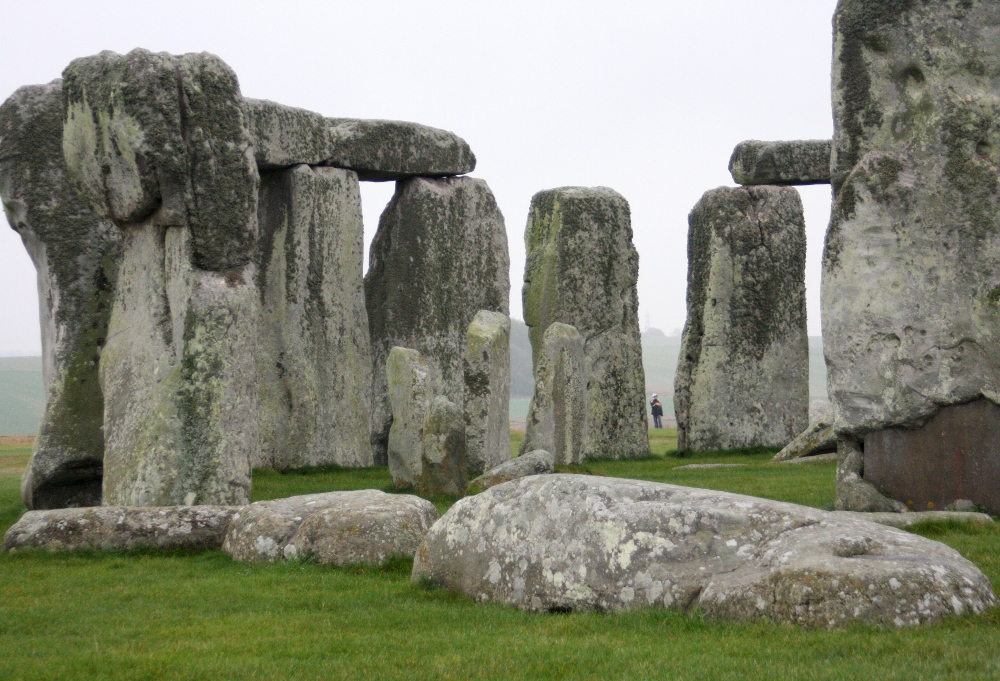Part 2: Stonehenge

Rising up out of the tunnel into the field, the first thing I notice is their size. Stonehenge is huge. Enormous. I am used to seeing them on television; in books. Size is deceptive.
The second thing I noticed is how amazed I am by their size. I had just been there two years before. I should not have been this awe-struck. But that is Stonehenge. It does not become less impressive by familiarity. It just gains in mystery and grandeur. The more I study it and learn about it, the more magnificent it becomes.
New studies of the area are always being undertaken. New theories tested. New evidence being found. Nearby at Durrington Walls is the site of a settlement. Archaeologists believe it might be the settlement of workers who built Stonehenge. Who were they, and why here?
Within the last few years, evidence of another stone circle has been found nearby. Research points to the existence of another circle at the end of the ancient avenue leading out from Stonehenge to the river Avon. Are they related? Were they two parts of one ritualistic journey?
The stones at Stonehenge come from two places: The smaller inner circle of stones are from nearby fields, no more than twenty miles way, The larger stones are from Wales. 150 miles away. Why not just build the circle in Wales?
I drug David to every possible stone circle in bussing distance all over Scotland. All equally impressive and equally mysterious. Yet, none like Stonehenge. I haven’t done my research yet, but our guide yesterday told us it is unique in Britain because it is the only one that used sculpted stones. The other circles were made of natural stone, but stonemasons shaped Stonehenge’s boulders into the uniform monoliths we see today.
While research is carried out all over the surrounding area, Stonehenge itself is rarely a dig site. Although I do not know for certain why that is, I do have my guesses. Archaeology, while being beneficial to our knowledge of the past, is invasive surgery. In order to get under the ground, we have to dig up the present. There are ways of minimising damage, such as using radar to search for clues underground before digging pell-mell. It does not seem difficult to dig in small sections, and carefully replace dirt to put things back to normal.
However, a clue from a Smithsonian article in 2009 provides insight into views on Stonehenge. Before beginning the first dig on the Stonehenge in 44 years, prayers were spoken and blessings were requested. Even today, Stonehenge is still a holy place. Druids worship here at the Solstices. The mounds surrounding the area are the burial places of hundreds of people.
Yet, we do much research and digging across the middle east and the cradle of Christianity, Judaism and Islam. We want to know our history, including our religious history.
That leaves me to agree with Geoffrey Wainright, President of the Society of Antiquaries of London. He was involved in the research at Stonehenge in 2009. He told Smithsonian, “I think what most people like about Stonehenge is that nobody really knows why it was built, and I think that’s probably always going to be the case. It’s a bloody great mystery.”